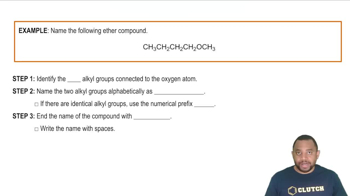Draw structures for molecules that fit the following descriptions:
(a) C3H6O containing an aldehyde functional group
 Verified step by step guidance
Verified step by step guidance Verified video answer for a similar problem:
Verified video answer for a similar problem:



 2:14m
2:14mMaster Hydrocarbons Concept 1 with a bite sized video explanation from Jules
Start learning